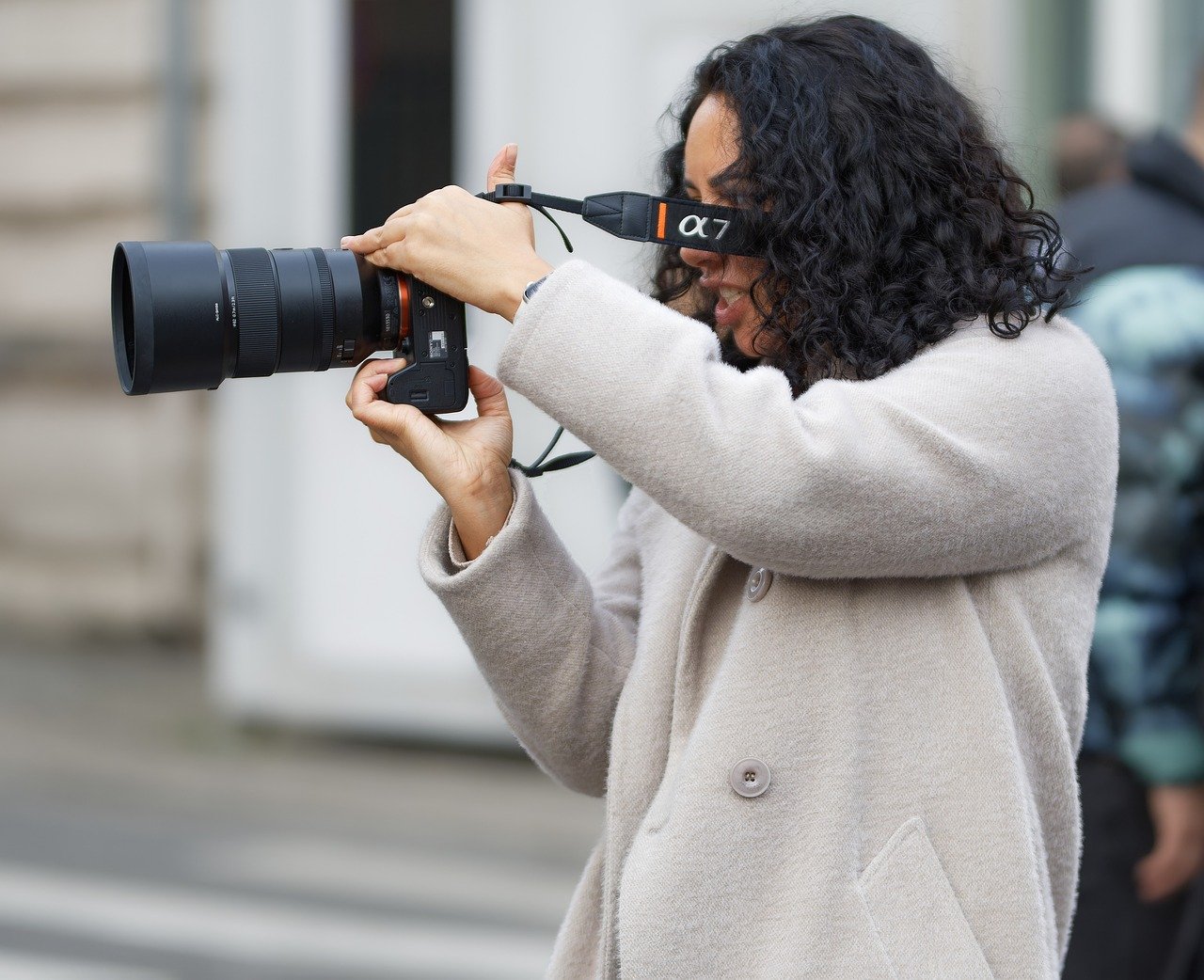
Top 10 Features to Look for in a Digital Camera
Choosing the right digital camera can be a daunting task, especially with the abundance of options available on the market today. Whether you are a seasoned photographer or a beginner looking to capture stunning images, understanding the key features of a digital camera is essential. In this article, we’ll break down the top 10 features to look for in a digital camera, helping you make an informed decision that meets your specific needs and photography style.
1. Sensor Size and Type
The sensor is arguably the most important component of any digital camera, as it directly affects image quality. The larger the sensor, the more light it can capture, resulting in better image clarity, depth, and low-light performance.
Sensor Types
- Full-Frame Sensors: These are the largest and typically found in high-end professional cameras. Full-frame sensors excel in low-light conditions, provide greater detail, and offer shallow depth of field for beautiful background blur (bokeh).
- APS-C Sensors: Common in entry-level and mid-range cameras, APS-C sensors are smaller than full-frame but still deliver excellent image quality.
- Micro Four Thirds Sensors: These are smaller than APS-C and full-frame sensors, found in many mirrorless cameras. While they may not perform as well in low light, they offer great portability.
When choosing a camera, decide how important image quality and low-light performance are for your photography. For professional use or if you shoot in low-light conditions often, a full-frame sensor is ideal. For casual or beginner photographers, APS-C or Micro Four Thirds sensors may be more practical.
2. Megapixels
Megapixels refer to the number of pixels in an image captured by your camera’s sensor. While the number of megapixels is often marketed as a key feature, it's not the only factor that influences image quality.
Why Megapixels Matter
- Print Size: If you plan on making large prints of your images, having more megapixels allows for greater detail and larger prints without loss of quality.
- Cropping: Higher megapixels give you more flexibility to crop your images while maintaining a high resolution.
What to Look For
- 12-20 MP: More than enough for most users, especially for online sharing or smaller prints.
- 20-30 MP: Ideal for larger prints and more detailed shots.
- 30+ MP: Recommended for professional photographers who need maximum detail for large-scale prints or commercial work.
While a higher megapixel count can improve image clarity, especially when cropping or printing large images, remember that more isn’t always better. Larger file sizes may require more storage and processing power.
3. Lens Compatibility
The quality of your camera's lens is just as important, if not more, than the camera body itself. If you're planning to get serious about photography, investing in a system with a wide range of interchangeable lenses is crucial.
Key Considerations
- Lens Mount: Different camera brands use proprietary lens mounts, meaning lenses designed for one brand (e.g., Canon, Nikon, Sony) won’t fit another without an adapter. Make sure the camera system you choose offers the variety of lenses you need for your photography style.
- Prime vs. Zoom Lenses: Prime lenses have a fixed focal length and are known for sharper images and better low-light performance. Zoom lenses offer versatility, allowing you to change focal lengths without switching lenses.
- Third-Party Lenses: Some cameras are compatible with lenses from third-party manufacturers like Sigma or Tamron, which can offer high-quality lenses at more affordable prices.
When considering lenses, think about your photography style. Do you need a wide-angle lens for landscapes, a telephoto lens for wildlife, or a macro lens for close-up shots?
4. Autofocus System
A camera's autofocus system determines how quickly and accurately it can lock onto a subject. This is especially important for sports, wildlife, and action photography, where subjects are moving quickly.
Types of Autofocus Systems
- Phase Detection Autofocus (PDAF): Common in DSLR cameras, PDAF uses a dedicated sensor to quickly calculate focus by measuring phase differences. This system is fast and accurate, making it ideal for fast-moving subjects.
- Contrast Detection Autofocus (CDAF): Found in many mirrorless cameras, CDAF works by analyzing contrast in the image to achieve focus. While it's highly accurate, it tends to be slower than PDAF.
- Hybrid Autofocus Systems: Many modern cameras, especially mirrorless models, now use hybrid systems that combine both PDAF and CDAF for faster, more accurate focus in various conditions.
Autofocus Points
Autofocus points are the areas where the camera can focus on a subject. The more autofocus points a camera has, the more flexibility you have to focus on different parts of the frame.
- Entry-Level Cameras: Usually have 9 to 11 autofocus points.
- Mid-Range Cameras: 30 to 60 autofocus points.
- Professional Cameras: Can have over 100 autofocus points for maximum precision.
If you frequently shoot moving subjects or sports, look for a camera with a fast and reliable autofocus system, including continuous autofocus tracking.
5. ISO Range
The ISO setting on a camera controls its sensitivity to light. A wider ISO range allows for greater flexibility when shooting in different lighting conditions.
Understanding ISO
- Low ISO: Ideal for bright environments (e.g., outdoors during the day), a low ISO (100-400) will produce clean, noise-free images.
- High ISO: In low-light conditions, you’ll need a higher ISO (1600-3200 or more) to capture enough light without requiring a slower shutter speed or wider aperture. However, higher ISOs can introduce noise, reducing image quality.
What to Look For
- Wide ISO Range: A camera with a wide ISO range allows for greater flexibility in different lighting conditions. Look for a camera that offers an ISO range of at least 100-3200, with expandable options for even lower or higher settings.
- Low-Light Performance: Check reviews for how the camera handles noise at high ISO settings. Some cameras, especially those with larger sensors, perform better in low-light without producing grainy images.
6. Burst Mode and Continuous Shooting Speed
Burst mode or continuous shooting speed is essential for capturing fast-moving subjects. This feature allows you to take multiple shots in quick succession, improving your chances of getting the perfect shot.
Frame Rate
- Entry-Level Cameras: Typically offer 3 to 5 frames per second (fps), which is sufficient for casual photography.
- Mid-Range Cameras: 5 to 10 fps, offering more versatility for sports or wildlife photography.
- Professional Cameras: Can shoot at speeds of 10 to 20 fps or higher, ensuring you capture every moment in high-action scenes.
If you plan to photograph sports, wildlife, or any fast-moving subjects, a high burst rate and a fast autofocus system are crucial for capturing sharp, well-timed images.
7. Video Capabilities
With the rise of vlogging, content creation, and hybrid photography, video quality has become a crucial factor for many buyers. If you’re looking to record high-quality videos, consider the camera’s video capabilities.
Key Features
- 4K Recording: Many modern cameras offer 4K video recording, providing four times the resolution of 1080p Full HD. Look for 4K at 30fps or 60fps for smooth, high-resolution footage.
- Frame Rates: If you plan to capture slow-motion footage, check if the camera offers high frame rates like 120fps at Full HD.
- Microphone Input: For high-quality audio, look for a camera with an external microphone input. Built-in microphones are usually lower quality and may pick up ambient noise.
If you’re serious about video, look for a camera with strong video features, including 4K recording, manual video controls, and a flip-out screen for vlogging.
8. Image Stabilization
Image stabilization (IS) helps reduce the blur caused by camera shake, especially in low-light conditions or when shooting handheld.
Types of Image Stabilization
- Optical Image Stabilization (OIS): Found in the lens or sensor, OIS physically moves to counteract the effects of camera shake. This type is particularly useful for telephoto lenses or when shooting video.
- In-Body Image Stabilization (IBIS): The camera’s sensor moves to counteract motion, providing stabilization regardless of the lens used. This feature is common in many high-end mirrorless cameras.
If you plan to shoot in low light, use long focal lengths, or record video, image stabilization is a must-have feature. It reduces the chances of blurry shots, especially at slower shutter speeds.
9. Viewfinder Type
Cameras typically come with one of two types of viewfinders: optical viewfinders or electronic viewfinders (EVF).
Optical Viewfinders
Found in DSLR cameras, optical viewfinders show you exactly what the lens sees through a series of mirrors. They provide a clear, real-time view of your subject, even in bright light.
Electronic Viewfinders
Common in mirrorless cameras, EVFs display a digital image of what the sensor captures. While some photographers prefer the clarity of an optical viewfinder, EVFs offer advantages such as live exposure previews, focus peaking, and image playback without removing your eye from the viewfinder.
If you prefer a traditional experience, an optical viewfinder might be your best option. However, if you want to see how your settings affect your image in real-time, an EVF is ideal.
10. Connectivity and Storage Options
Modern digital cameras offer a variety of connectivity options that make it easier to transfer photos, control your camera remotely, and share images online.
Key Connectivity Features
- Wi-Fi: Allows you to wirelessly transfer photos to your smartphone, tablet, or computer.
- Bluetooth: Some cameras have Bluetooth for quick pairing with mobile devices.
- USB-C/HDMI: For fast data transfer and connecting your camera to external monitors or storage devices.
- Dual Card Slots: Many mid-range and professional cameras offer two memory card slots, allowing you to save backups or increase storage capacity.
Having multiple connectivity options and adequate storage is essential for anyone who plans on sharing their images frequently or capturing large quantities of photos or video.
Conclusion
Choosing the right digital camera comes down to understanding the features that best align with your photography needs and goals. From sensor size and autofocus systems to video capabilities and connectivity options, each feature plays a crucial role in your camera’s performance.
By carefully evaluating these top 10 features, you can find the perfect camera that not only meets your requirements but also enhances your photography skills. Whether you’re capturing action shots, stunning landscapes, or beautiful portraits, the right camera can make all the difference in achieving your creative vision.
